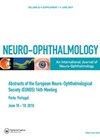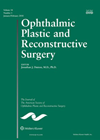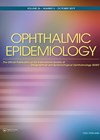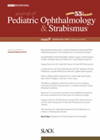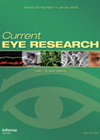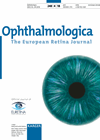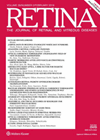
Journal Reviews archive for 2020
Choroidal vascularity in NAION
The authors present a cross-sectional, non-interventional study of healthy volunteers and those with non-arteritic anterior ischaemic optic neuropathy (NAION) recruited over a six-month period at a single site. NAION is the most common cause of acute optic neuropathy over the...
Vitamin D and thyroid eye disease
This is a retrospective review of vitamin D levels in patients with thyroid eye disease (TED). Vitamin D levels in 89 patients with Grave’s disease and TED were compared against 89 patients with Grave’s disease and no TED. They also...
Ablepharon-macrostomia syndrome
The ablepharon-macrostomia syndrome is a very rare condition caused by a dominant mutation in the TWIST2 gene. Congenital defects include rudimentary eyelids, macrostomia, ambiguous genitalia and campodactyly. Neonates are at risk of severe corneal exposure without intervention. Previous reports have...
Childhood blindness and visual impairment in the Narayani Zone of Nepal
Up to 50% of childhood blindness is preventable or treatable, and its control is a high priority in the VISION 2020 initiative of the International Agency for the Prevention of Blindness. In this study, the authors utilised the rapid assessment...
Descemet stripping endothelial keratoplasty: surgical management of congenital hereditary endothelial dystrophy
This retrospective case series reports the long-term outcomes of Descemet stripping endothelial keratoplasty (DSEK) with suture assisted donor lenticular assisted donor lenticule insertion in paediatric patients with congenital hereditary endothelial dystrophy (CHED). Thirty eyes of 16 patients were reviewed and...
OCTA to measure surgical hemodynamic changes
This study used the optical coherence tomography angiography (OCTA) technique to evaluate possible hemodynamic changes after horizontal rectus muscle surgery in 32 eyes of 16 patients; nine male, seven female. Recession / resection surgery was undertaken for two horizontal rectus...
Cytokine levels in vitreous fluid in patients with pathological myopia
Pathological myopia (PM) is a leading cause of irreversible visual impairment worldwide, and efforts are dedicated to the study of its underlying mechanisms. Axial extension of the eyeball is regulated via a cascade of biochemical molecules that are initiated in...
Hypothyroidsim and acute central serous chorioretinopathy – is there a link?
This cross-sectional study included 71 consecutive acute central serous chorioretinopathy (CSC) patients and 70 age-matched healthy control subjects. Systemic findings, including serum levels of thyroid hormones, thyroid stimulating hormone (TSH), mean arterial pressure (MAP), pulse rate, serum lipid levels and...
Comparison between findings in OCTA and FA in patients with diabetic retinopathy
In this study the authors present a prospective cross-sectional comparative study of typical findings of diabetic retinopathy to analyse the agreement between the image modalities of optical coherence tomography angiography (OCTA) and fluorescein angiography (FA). Fifty-three eyes of 42 patients...
Results of fixed aflibercept treatment regime in type 3 neovascularisation
In this prospective study the authors evaluate the effect of intravitreal aflibercept injections in the treatment of naive type 3 neovascularisation using a fixed treatment regime. Fourteen eyes of 14 patients were studied. All patients were treated with intravitreal 2.0...
Retinal ischaemia on OCTA and diabetic retinopathy grade
The authors quite rightly point out that quantification of retinal ischaemia has the potential to serve as a biomarker for diabetic retinopathy disease progression. They set out to investigate the relationship between area of ischaemia on a swept source OCTA...
Age-related macular degeneration in elderly persons in Germany
The authors present the findings of a cross-sectional study in 11 seniors’ community centres. Eleven community centres were screened with a total of 281 participants. A third of participants with gradable images were in normal retinal health (32%).The most common...

